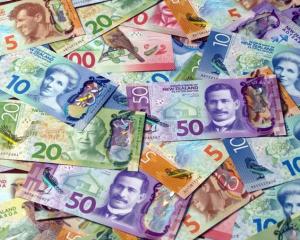The New Zealand dollar was the best performing major currency in December amid a more positive dynamic for commodity currencies, BNZ currency strategist Jason Wong said.
The Australian and Canadian dollars also performed well.
The global macroeconomic backdrop was supportive. The Citigroup G10 economic surprise indicator rose to its highest level since 2010, indicating the continuing positive global economic flow of data, he said.
JP Morgan's global manufacturing performance in manufacturing index rose to its highest level since 2011.
Most commodity prices were higher in December. Brent crude rose to $US67 a barrel, its highest level since mid-2015. The LME index was up about 7% for the month, indicative of the sorts of gains registered for industrial metal prices. Iron ore and coal prices showed solid gains, Mr Wong said.
Closer to home, NZX wholemilk dairy powder futures were up 2.5% as drought conditions developing in New Zealand were likely contributing to higher pricing.
GDT dairy auction pricing remained weak and led Fonterra to downgrade its milk payout for the current season by 4.5% to $6.40 per kg of milksolids.
Global equity markets continued their strong run, supported by the positive economic and earnings backdrop, he said.
Before Christmas, United States President Donald Trump signed a tax reform package, showing a rare victory since his election. The package supported US equities.
The MSCI world equity index was on track to make a 11.5% gain for the month, its 14th consecutive monthly increase and on track for a gain of about 20% for the year, Mr Wong said.
The New Zealand dollar's top performance for the month could be explained by the positive global backdrop, including higher risk appetite and the appointment of Adrian Orr as the new governor of the Reserve Bank.
The market took the news of a local candidate with vast experience with policy and financial markets as a positive sign.
Some of the domestic political risks premium built into the dollar since the election faded following the announcement. Positive revisions to GDP data supported the dollar later in the month, he said.
The NZD/USD cross moved higher through the month. The low was recorded on the first day of the month and the high recorded on the last day of the month, making for a 3.5% gain.
The US dollar's performance for December was lacklustre as the tax reform package was already well-priced by the market.
Soft US inflation data for yet another month did not help, Mr Wong said.
The Federal Reserve funds rate was raised for the third time in 2017 at the December meeting but it was also well anticipated by the market.
Despite revising downward its unemployment rate forecasts, the Fed kept its rates and inflation forecasts unchanged for next year. The market took that as a less hawkish signal than expected, he said.
The NZD/AUD cross traded in a A90c to A92c range. A slightly hawkish speech by Reserve Bank acting governor Grant Spencer started a sustained move higher in the cross early in the month and that was soon followed by the appointment of Mr Orr.
Strong Australian employment data meant the cross moved down from an intra-month peak of A92c to settle at about A91c in the final week of the year, Mr Wong said.












